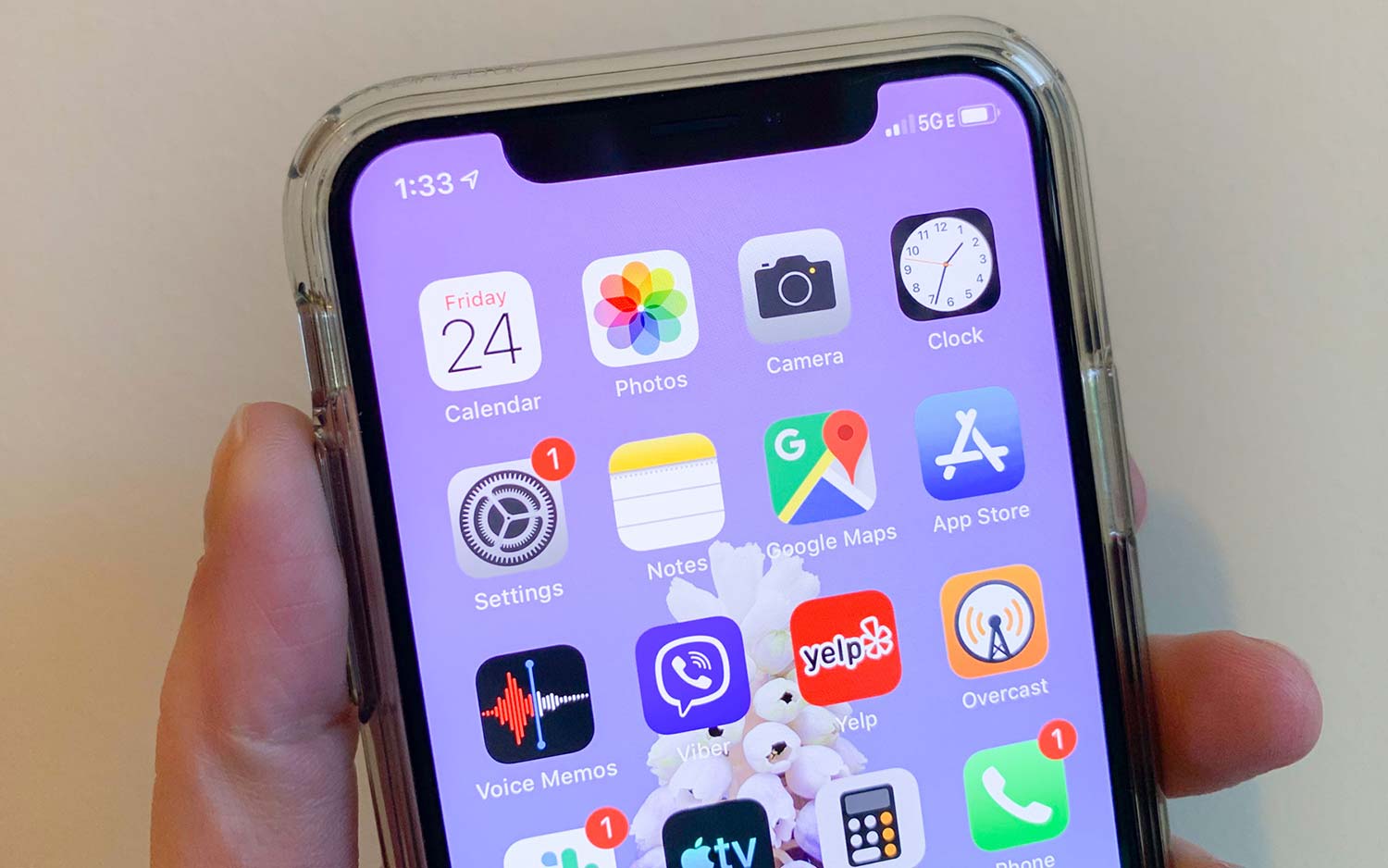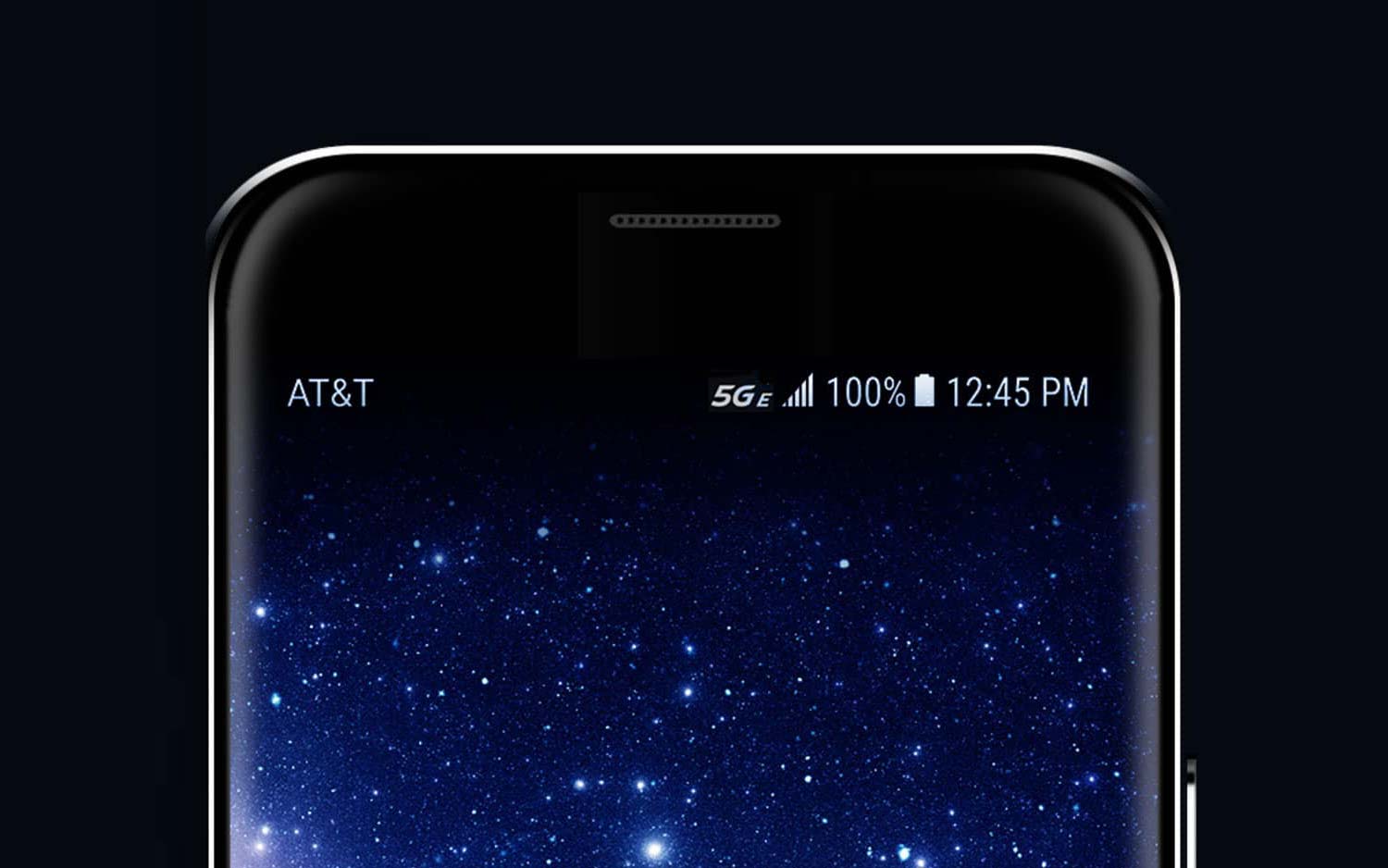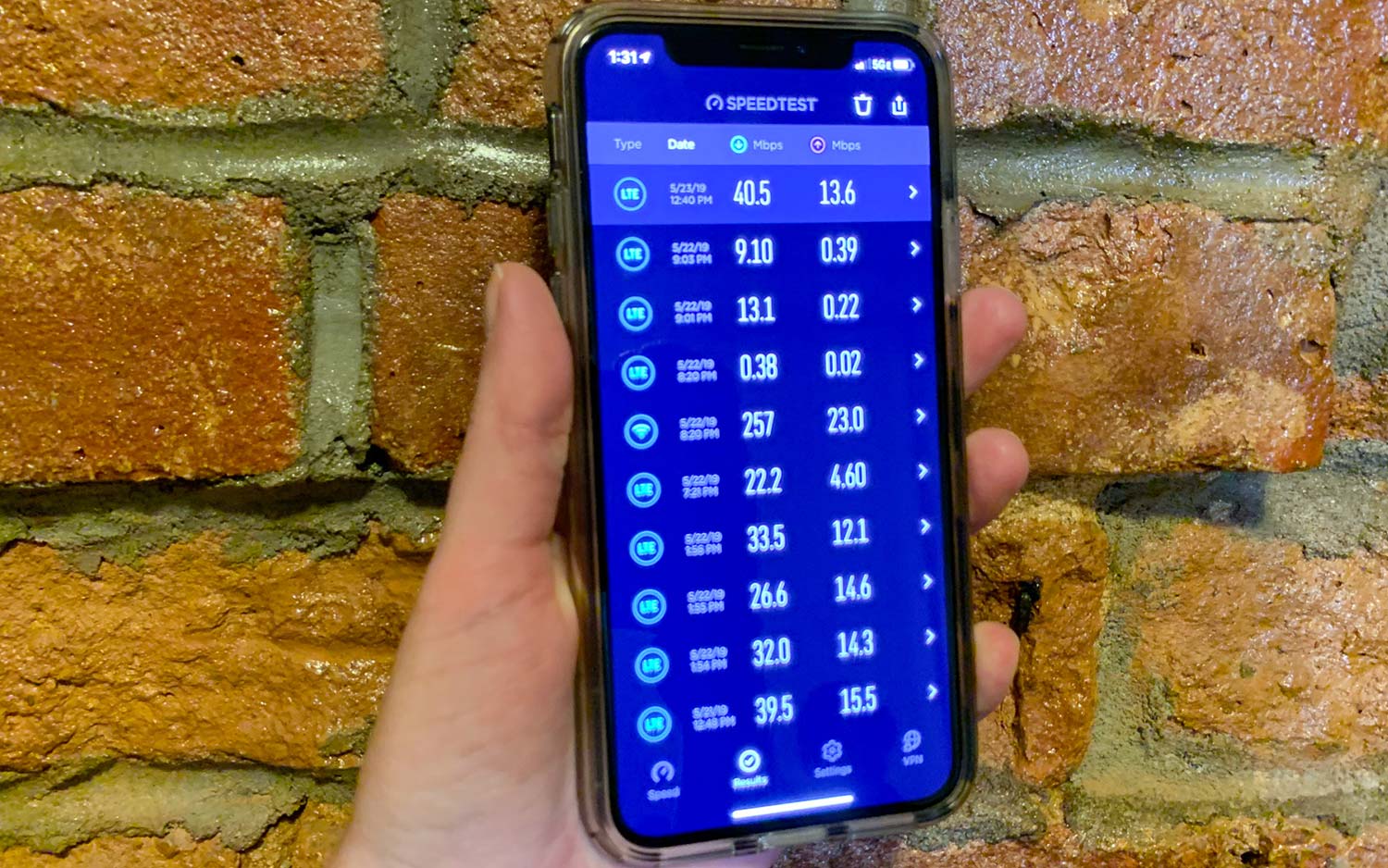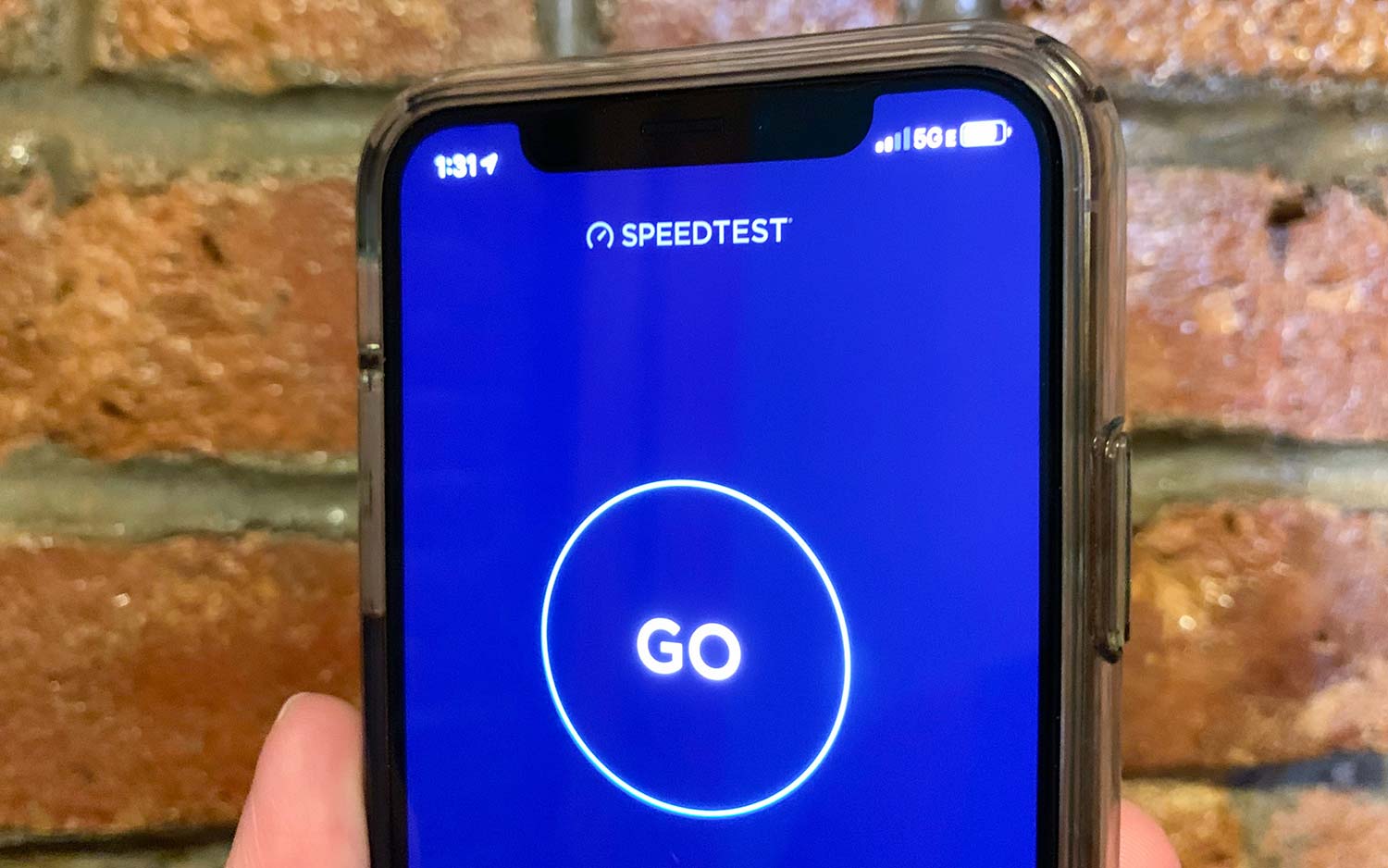It's Official: AT&T's 5GE Is Slower Than Verizon and T-Mobile’s 4G LTE
AT&T's 5GE network is nothing like 5G, and in fact falls short of rival carriers' LTE networks, based on testing.
A few months ago, I installed an iOS update that changed my iPhone XS. The cellular connectivity icon to the right of my iPhone's notch had subtly switched from LTE to 5GE. As an AT&T subscriber, I was perplexed: Since when did AT&T launch 5G? And did this new logo mean faster speeds?

AT&T had not, in fact, launched a mobile 5G network in New York City, and I realized that 5GE has nothing to do with faster speeds.
The E in 5GE, which stands for Evolution, is telling. Nothing about my phone is faster — in fact, I'm pretty sure the opposite is true. The 5GE logo now fills me with irritation, especially when I can't get a new batch of emails to download on a subway platform when my phone is allegedly connected to a 5GE network. The LTE logo, which pops up when 5GE isn't available, is infuriating. My phone is barely functional — no emails will download, no tweets will load, and searching for a song in Apple Music results in a pitiful "try again" error. LTE has apparently lost all meaning for AT&T.
MORE: AT&T 5G Network Rollout: Locations, Phones, Price and More
And now that we've been able to test a live 5G network with a 5G smartphone — Samsung's Galaxy S10 5G on Verizon's recently launched 5G network in Chicago — 5GE is laughable. Not only does 5GE fall far short of 5G speeds, AT&T's advanced network doesn't even stack up to Verizon's LTE.
What Is 5GE?
5G Evolution is AT&T's name for its advanced LTE network. The carrier has implemented 256 QAM, three-way carrier aggregation and 4X4 MIMO technologies to improve performance and boost speeds. Rival carriers have done the same, but they have chosen to call those improved networks LTE Advanced instead of using 5G to describe enhancements.
Get instant access to breaking news, the hottest reviews, great deals and helpful tips.

5G isn't just a marketing term. It's a standard agreed to by the 3rd Generation Partnership Project, comprised of telecom stakeholders. LTE is an anchor of 5G, and 5G-capable devices can also take advantage of LTE networks when 5G connectivity is unavailable. But LTE itself is not 5G.
MORE: Real 5G Phones: Every Known Phone and Release Date
That's where AT&T has run into trouble. Sprint sued AT&T over what it called deceptive marketing practices, but the two companies settled the suit in April. The lawsuit may have gone away, but unfortunately, the 5GE logo remains.
How 5GE compares to LTE
AT&T says 5GE delivers real-world speeds of 40 megabits per second. That's stretching it, in my testing. I used Ookla's Speedtest app to gauge my 5GE iPhone XS speeds compared with a Verizon LTE iPhone XS and a T-Mobile LTE Galaxy S10 Plus. So-called 5GE underperformed both networks — by a lot.

First, I tested the S10 Plus and 5GE iPhone at my desk, located on the 15th floor of a high rise overlooking Manhattan's Bryant Park. The connectivity here is extremely strong.
With four bars of T-Mobile LTE, the Galaxy S10 Plus reached 53.1-Mbps download speeds and 20.2-Mbps upload speeds. My iPhone XS with full 5GE bars hovered at 39.5 Mbps download and 15.5 Mbps upload. The iPhone XS on Verizon's LTE network cleared 64.2 Mbps, although upload speeds were a little underwhelming at 10.4 Mbps.
MORE: Fastest Wireless Network 2019
Verizon easily won our wireless network shoot-out last year, and it's also the only carrier to offer a 5G phone, Samsung's Galaxy S10 5G, on a live 5G network (though its coverage is currently limited to Chicago and Minneapolis).
Then I pitted the 5GE iPhone against the Verizon LTE iPhone to test both networks as I was exiting a subway station in Manhattan. Both devices showed full bars, but underground connectivity is always spotty for me, regardless of what my iPhone says. The 5GE iPhone pulled down 22.2 Mbps with upload speeds of 4.6 Mbps. The Verizon LTE iPhone hit 49.3 Mbps, but upload speeds dropped to 5.83 Mbps.
MORE: The Truth About 5G: What's Coming (and What's Not)

The living room of my apartment isn't quite a cell phone dead zone, but I only ever have two bars, regardless of the network I'm on or the device I'm testing. From my couch, the 5GE iPhone hit 13.1 Mbps, then 9.1 Mbps in a follow-up test 2 minutes later. The Verizon LTE iPhone cleared 62.5 Mbps, then 50.1 Mbps in the follow-up test. Upload speeds were terrible on both networks — 0.22 and 0.39 in back-to-back tests for the 5GE iPhone, and 3.06 and 2.61 for the Verizon LTE iPhone — but Verizon's network was stronger than I expected.
My speed tests aren't the only indicators of 5GE's failings. OpenSignal data collected earlier this year showed that AT&T's 5GE network averaged 28.8-Mbps download speeds, which is slower than Verizon's and T-Mobile's LTE networks, which averaged 29.9 Mbps and 29.4 Mbps, respectively.
5GE vs. 5G: It's not even close
With 5GE lagging behind LTE speeds, how does it stack up to real live 5G networks? It doesn't.

We spent a day in May testing the Galaxy S10 5G on Verizon's 5G network in Chicago, and while coverage was extremely spotty, we managed to break 1 gigabit per second. When people talk about 5G's potential, that's what we want to see. The S10 5G didn't consistently reach 1-Gbps download speeds, but it hovered around 700 Mbps during our testing.
MORE: Samsung and Verizon Releasing 5G Phone in Early
Verizon's 5G network is improving. An earlier test was less impressive — Motorola's 5G Moto Mod helped our Moto Z3 reach average download speeds of between 177 Mbps and 468 Mbps.
But even with 5G in its infancy, the difference between actual 5G and 5GE is staggering.
Bottom line
AT&T put pressure on itself by pushing out the 5GE logo. Without it, I was mostly satisfied with the carrier, even though I thought AT&T's service sputtered a little too often when I launched Apple Music as I stepped outside my front door or when I tried to download emails underground.
But 5GE indicates that AT&T's network should be fast — at least faster than rival LTE networks that aren't throwing around 5G terminology for their LTE networks. It's unclear which carrier will have the fastest 5G network or the broadest 5G coverage, but in the meantime, 5GE's got me thinking I should switch to Verizon.
Credit: Tom's Guide
Caitlin is a Senior editor for Gizmodo. She has also worked on Tom's Guide, Macworld, PCWorld and the Las Vegas Review-Journal. When she's not testing out the latest devices, you can find her running around the streets of Los Angeles, putting in morning miles or searching for the best tacos.
